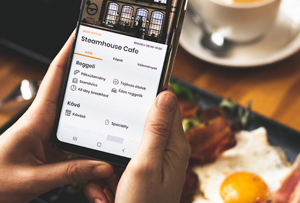![]() 6 minute read
6 minute read
Can space travel become cheaper and accessible in the future? Also, how NASA plans to shape the future of space travel? There are numerous opportunities waiting to be exploited once new players enter the space exploration market. Making use of resources such as those hidden in minerals will free humanity from its terrestrial restraints and launch it into a future as yet unknown.
A Cis-lunar
outpost
Today, a trip to the international space station costs around $81 million per seat. With the proliferation of private companies experimenting with space tourism, the expense can be decreased. Jason Crusan, director of advanced exploration systems at NASA, insists that ‘if we wanted to go to Mars tomorrow, we could. It’s a matter of how much do you want to launch’. Using current technologies, such a launch and travel would be incredibly expensive making the trip unfeasible. The only way to cut down the costs is to reorient towards more sustainable alternatives. The space industry at large understands this.
The price alone is not the factor. For a trip of 35 million miles or more, besides the need for a constant supply of fuel, there is also the need to service or replace parts that have been affected due to solar radiation. With this in mind, the space industry is planning a cis-lunar outpost. This moon-based pit stop will have machines and robots servicing spaceships that en route to Mars. NASA details the plan in their press release titled ‘Voyages: Charting the course for Sustainable Human Space Exploration’. A potential lunar base will have 3 pronged advantages. It will help increase scientific knowledge, pave the way to future explorations and will be advantageous for technological and economic growth. In the latter, the agency states the lunar base will also support activities on Earth. Acting as a connector, this moon station will enable astronauts to service and manage satellites extending its capabilities. This, in return, will not only save the costs of building and launching satellites but also decrease the fuel consumption used to transport them.

New players
in space travels
NASA and SpaceX aren’t the only companies interested in revolutionizing the Space industry. The global space industry was worth $323 billion in 2015 and it continues to invite new companies who seek a chunk of the commercial space activities. Arianespace, a French company, is collaborating with Airbus to make a miniature rocket system which would be easier to retrieve and fly back to a landing strip. They plan to fly the rockets by 2025 and are closely monitoring SpaceX experiments to improve their own designs. United Launch Alliance, a joint venture between Boeing and Lockheed Martin is working on ‘space trucks’ that don’t need to be brought back to the earth and can stay in orbit, refuelled and used to transport other less powerful rockets propelled towards them.
Mining the asteroids
Innovators in the space explorations envision a space industry set in the cis-lunar scape, using materials mined from asteroids and 3D printing components for rockets and space stations. Phil Metzger, a planetary physicist, who has worked for NASA, insists that the discovery of the minerals was a game-changer: ‘The asteroid belt has a billion times more platinum than is found on Earth. There is literally a billion times the metal that is on Earth, and all the water you could ever need’. Similarly, asteroids can be mined for carbon and hydrogen enabling the production of plastics and rubber. Comparing transport of raw materials from earth with mining from the asteroids, Accenture estimates a 5000x cost reduction.
The extracted material can cater to local supply needs. Christopher Barnatt, who is an author and a futurist, insists that our demand for natural resources is expected to triple till 2050 and earth’s finite resources would fall short of the demand. In such a scenario, supply from asteroids could be one of the solutions. For example, one in four manufactured goods uses Platinum in some form. The extracted Platinum, found abundantly in space, can be brought back to earth. Besides catering to the demand, this method will decrease local environmental degradation and exploitation by earth-based mining industries. Work is already being done to bring asteroid materials back to home. NASA’s OSIRIS-Rex spacecraft launched last year is projected to reach the asteroid Bennu in 2018 and extract some materials to be later brought back to earth. Deep Space Industries and Planetary resources are competing with each other to be the first commercial space miner. The state of Luxembourg has already offered full support for such an initiative and has pledged to work on retrieving materials from the space.
With this level of interest in asteroid mining, besides blossoming itself, it will also revamp the supply chain of almost all of the industries in the world. It would also change the market dynamics by decreasing the cost of production due to increased supply from the space.
2030:
a year of circular space
One of the advantages of the cis-lunar base would be to use it as a service point for passing spaceships. The concept of servicing acts upon the recent understanding of reusable rockets. SpaceX has been the pioneer of reusing rocket vessels paving the industry towards the circular economy. Following the same route, NASA plans to make it’s Orion capsule, scheduled to fly in 2020, reusable. Once in space, the capsules will be flexible in use and transportation. The units can easily go into lunar orbit and transport materials or astronauts to spaceships. The vehicles can be reused up to 10 times, returning to earth with guided parachute systems.
The capsules are also planned as assembly machines for future rockets destined towards Mars. They would be able to carry oxygen, fuel or parts, building and improving the rocket in the same assembly model as the International Space Station. Moreover, if humans are able to harness minerals within the lunar surface and the water on the poles, the Orion vehicles could provide an efficient transport system. All of this would greatly decrease the expenses and emissions attributed to repeated launches from the earth.




